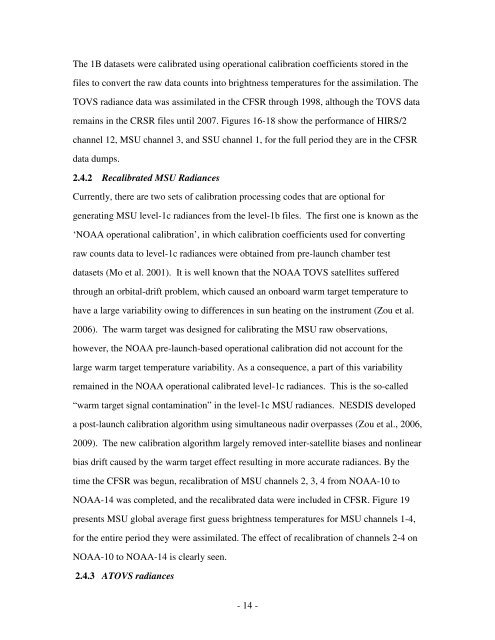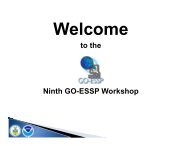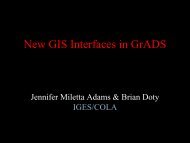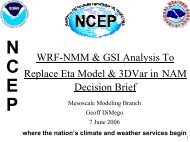The NCEP Climate Forecast System Reanalysis - NOAA National ...
The NCEP Climate Forecast System Reanalysis - NOAA National ...
The NCEP Climate Forecast System Reanalysis - NOAA National ...
Create successful ePaper yourself
Turn your PDF publications into a flip-book with our unique Google optimized e-Paper software.
<strong>The</strong> 1B datasets were calibrated using operational calibration coefficients stored in thefiles to convert the raw data counts into brightness temperatures for the assimilation. <strong>The</strong>TOVS radiance data was assimilated in the CFSR through 1998, although the TOVS dataremains in the CRSR files until 2007. Figures 16-18 show the performance of HIRS/2channel 12, MSU channel 3, and SSU channel 1, for the full period they are in the CFSRdata dumps.2.4.2 Recalibrated MSU RadiancesCurrently, there are two sets of calibration processing codes that are optional forgenerating MSU level-1c radiances from the level-1b files. <strong>The</strong> first one is known as the‘<strong>NOAA</strong> operational calibration’, in which calibration coefficients used for convertingraw counts data to level-1c radiances were obtained from pre-launch chamber testdatasets (Mo et al. 2001). It is well known that the <strong>NOAA</strong> TOVS satellites sufferedthrough an orbital-drift problem, which caused an onboard warm target temperature tohave a large variability owing to differences in sun heating on the instrument (Zou et al.2006). <strong>The</strong> warm target was designed for calibrating the MSU raw observations,however, the <strong>NOAA</strong> pre-launch-based operational calibration did not account for thelarge warm target temperature variability. As a consequence, a part of this variabilityremained in the <strong>NOAA</strong> operational calibrated level-1c radiances. This is the so-called“warm target signal contamination” in the level-1c MSU radiances. NESDIS developeda post-launch calibration algorithm using simultaneous nadir overpasses (Zou et al., 2006,2009). <strong>The</strong> new calibration algorithm largely removed inter-satellite biases and nonlinearbias drift caused by the warm target effect resulting in more accurate radiances. By thetime the CFSR was begun, recalibration of MSU channels 2, 3, 4 from <strong>NOAA</strong>-10 to<strong>NOAA</strong>-14 was completed, and the recalibrated data were included in CFSR. Figure 19presents MSU global average first guess brightness temperatures for MSU channels 1-4,for the entire period they were assimilated. <strong>The</strong> effect of recalibration of channels 2-4 on<strong>NOAA</strong>-10 to <strong>NOAA</strong>-14 is clearly seen.2.4.3 ATOVS radiances- 14 -





